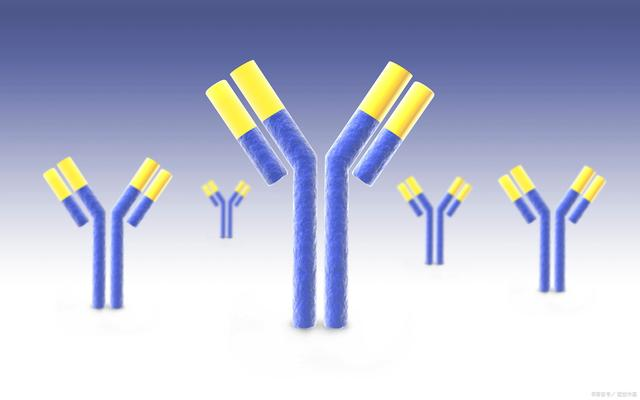Antibody Affinity Maturation
Antibody affinity maturation refers to a state of normal immune function. In humoral immunity, the average affinity of antibodies produced in a second response is higher than that of the initial immune response. This phenomenon is called antibody affinity maturation.
This functional state of the body is the result of long-term evolution and continuous adaptation to the external environment and is of great importance for the body's defense and maintenance of autoimmune surveillance.
In Vivo Affinity Maturation
Antibody affinity maturation is formed as a result of genetic mutations in the antibody-forming cells themselves and selective activation of B-cell clones by antigen. After the body receives antigenic stimulation, somatic cells undergo high-frequency mutations, and the mutations produce various B-cell clones with different affinities, which are captured by follicular dendritic cells, resulting in an increase in the average affinity of the progeny B cells, thus achieving in vivo maturation of the affinity.
In the body's humoral immune system, B lymphocytes are induced to produce antibodies in response to antigen stimulation. During repeated exposure to antigen, antibodies with high affinity are produced. This process involves two interrelated processes. First, random rearrangement of the light and heavy chain germline gene fragments of the bone marrow antibody by V-(D)-J to produce more than 106 combinations is the molecular basis of the antibody specific immune response. Second, after antigen stimulation, antibody genes, especially the complementarity determining region (CDR), undergo frequent mutations in the germinal center of secondary lymphoid organs, which lead to changes in antibody binding properties. The filtered dendritic cells present the antigen, and only the B cells with the highest antigen affinity will choose survival for further differentiation into plasma cells and memory cells.
In Vitro Antibody Affinity Maturation
The development of antibody preparation technology has gone through 3 stages of development: polyclonal technology, monoclonal technology and antibody library technology. Compared with mono- and polyclonal techniques, antibody library technology is very flexible at the gene level, and can analyze, modify and process gene sequences to improve antibody properties or give antibodies new properties, breaking through the previous limitations limited to the design of anti-antigen molecules. However, practical applications of antibody library-derived antibodies are very rare compared to traditional monoclonal and polyclonal antibodies, mainly because library-derived antibodies have low affinity compared to natural antibodies, making it difficult to meet a variety of practical needs. In particular, the affinity of antibodies from unimmunized natural antibody libraries is usually at the micromolar level, which is only comparable to the affinity level of antibodies obtained by animals after the initial immune response. Therefore, in vitro affinity maturation studies have been conducted based on the principle of in vivo antibody affinity maturation, simulating the in vivo affinity maturation process and adopting various strategies to mutate antibody genes accordingly.

Commonly Used In Vitro Affinity Maturation Techniques for Antibodies
According to the principle of in vivo antibody affinity maturation, the selection of mutation regions and how to introduce mutations during in vitro antibody affinity maturation is a key issue, and the current mutation strategies are divided into three main categories, random mutations, substitutions and targeted mutations.
Error-prone PCR
Error-prone PCR is currently the most commonly used antibody mutagenesis technique, which can introduce random mutations in the full length or part of the antibody gene. During amplification of the target gene by polymerase, mutations are randomly introduced into the target gene at a certain frequency by applying a polymerase with a high mismatch rate or adjusting the reaction conditions, etc. Random mutations are repeatedly induced by multiple rounds of PCR to accumulate mutation effects and finally obtain random mutants of the target protein.
Strand Displacement
Strand displacement is the combination of retaining the heavy or light chain of a specific antibody and combining the other chain with a randomized complementary chain, from which a more active mutant strain is screened. By fixing one of the two chains of an antibody and constructing a replacement library with sufficient diversity for the other chain, the randomized combination has the potential to produce the best chain combination, which can be screened by phage antibody libraries to obtain new high-affinity antibodies. Strand displacement strategies often employ light chain substitutions.
Site-directed Mutagenesis
Since natural antibodies are not uniformly distributed in the region where high-frequency mutations occur in somatic cells during affinity maturation, they are mainly concentrated in the CDR region that is in direct contact with the antigen. The CDR region is the most commonly selected region for targeted mutagenesis during the affinity maturation of antibodies in vitro, so that sufficient sequence diversity can be obtained without disrupting the protein structure. When performing fixed-point mutagenesis on CDRs, multiple CDRs can be mutated in parallel or optimized stepwise.
DNA Shuffling
DNA shuffling is a technique in which homologous antibody genes are cleaved into fragments of no more than 50bp using deoxyribonuclease I, then randomly combined and amplified into completed antibody genes by PCR. It contains the process of randomized cleavage, recombination and screening of antibody fragments, which to some extent mimics the affinity maturation process of natural antibodies and accelerates the rate of in vitro directed evolution.
Q&A
1. Why are light chains usually replaced in strand displacement?
Because the heavy chain of antibody is more important in terms of antibinding activity and structure, so the strand displacement strategy often uses light chain replacement to avoid changes in antibody binding specificity after strand displacement as much as possible.
2. What are the advantages and disadvantages of antibody library technology compared with mono- and polyclonal antibody technology?
Advantages: large screening range of antibody library, short experimental cycle, simple operation, no immunization operation, can be applied to mass production
Disadvantages: weak affinity, not easy to stimulate the human antigen-antibody reaction; clinical application is limited.




